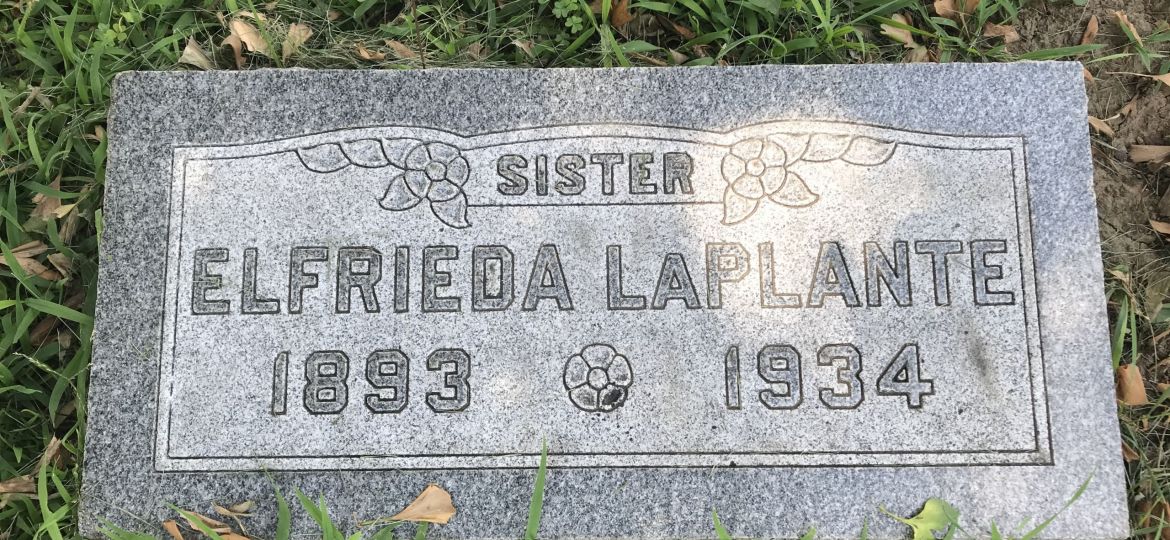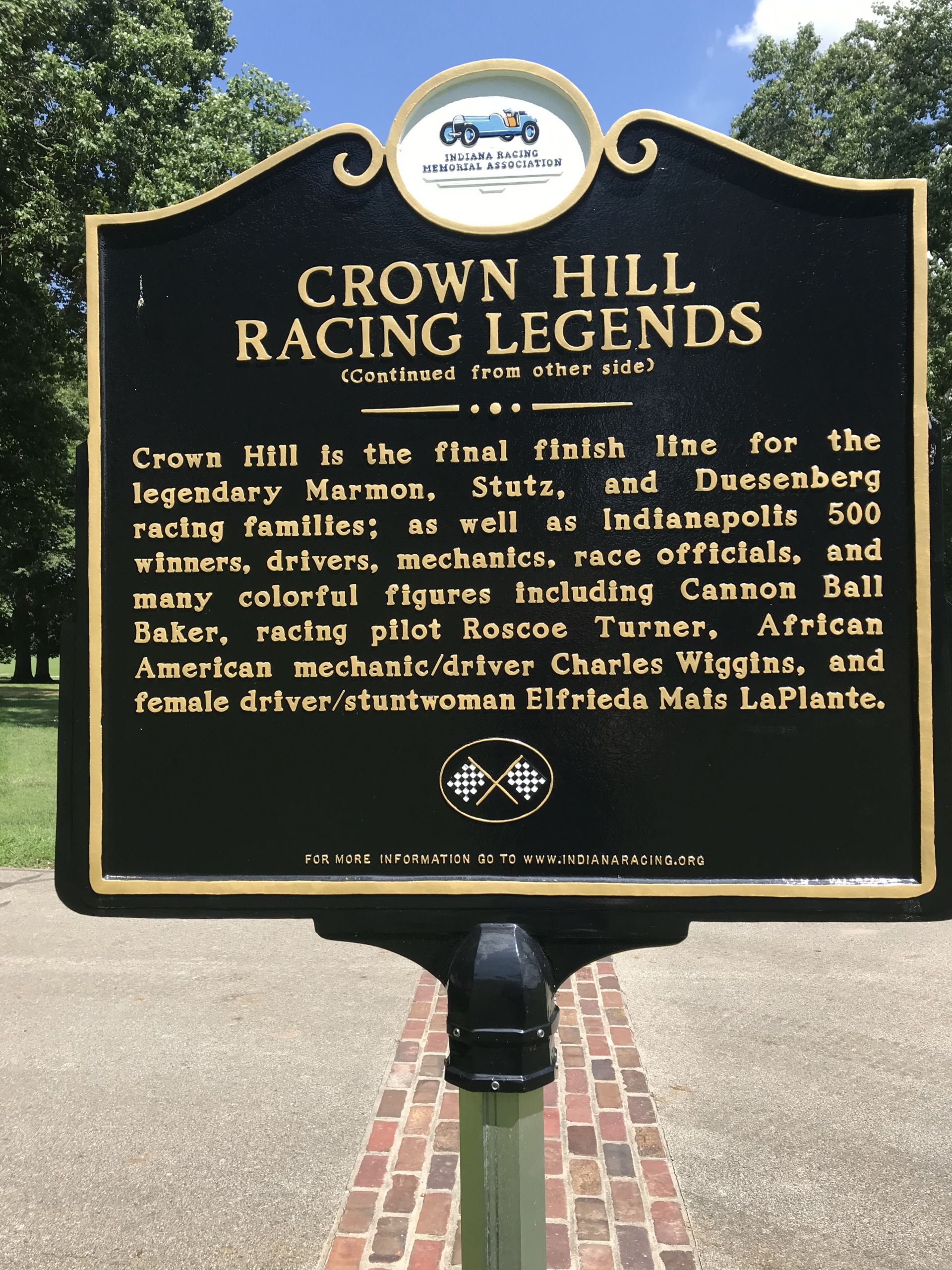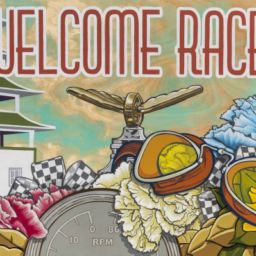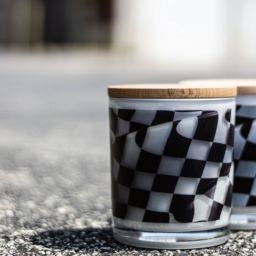
Elfrieda Mais was a natural-born gearhead, smart, gritty, hard-working, strong.
She was daring, too. But because she was a woman (born in 1893), she was forbidden from driving in any officially sanctioned auto race, and certainly barred from the big show, the Indianapolis 500.
But she figured out a way around that, kind of. She figured out a way to drive race cars at high speeds before large, paying crowds. She became famous by performing death-defying stunts, though her last stunt, attempted at the Alabama State Fair in Birmingham on Sept. 27, 1934, failed to defy death.
Elfrieda’s was a short life but an amazing one. She grew up in a small house on Indy’s Westside, one foot in the old world, one in the new. She was the daughter of a blacksmith. A blacksmith, working with piping hot metal, pounding out horse shoes among other things on anvils. Anvils!
And yet just four miles from the Hellmann house, 509 Minerva St. (the house is gone; all of Minerva is gone, cleared to make room for IUPUI), was the gigantic, marvelous, totally modern wonder that was and remains the Indianapolis Motor Speedway. Elfrieda could hear the roar of the engines from her backyard.
 She was 15 when construction began on the track, in March 1909, and that same month she herself received her first press mention: GIRL ARRESTED IN WINE ROOM GIVES FALSE NAME.
She was 15 when construction began on the track, in March 1909, and that same month she herself received her first press mention: GIRL ARRESTED IN WINE ROOM GIVES FALSE NAME.
Elfrieda and a friend, Bertha Cummings, 14, were discovered drinking with a salesman named Charles A. Overman at a bar at a not-first-class Indianapolis hotel. Elfrieda tried to duck trouble by misidentifying herself to police, but her ruse was quickly discovered. Still, not much came of it. (Overman was arrested for contributing to the delinquency of the girls, and the bartender who’d served the party was also arrested.)
The first car race at the Speedway was in 1910, and maybe Elfrieda attended, maybe she didn’t. There was nothing for her there professionally. Women were barred not only from driving race cars, but they weren’t allowed even in the pit area with the mechanics until 1971.
However, the Speedway was full of men, and Elfrieda was 17. It’s plausible if not likely she was at the Speedway when she met a young auto enthusiast named Johan “Johnny” Mais, who, in 1911, would be her first husband. The Mercedes-trained technician had moved to Indianapolis from Germany that year to be part of the city’s growing role in the auto industry.
The lives of history’s bit players are documented but sparsely and their inner lives not at all. It’s possible, for instance, to look up the names of Elfrieda’s parents (Peter and Margaret), and learn their address, but in the absence of an autobiography or biography or even a decent New Yorker profile, it’s impossible to know what was in Elfrieda’s heart.
The tall, square-jawed, cleft-chinned Mais was a talented and gutsy person but not a hugely successful one. He started a company building trucks, Mais Trucks. But despite producing a good product, the company soon failed. He turned to auto racing, built his own race car and drove it in the 1915 Indy 500. But the car failed after only 23 laps and Mais finished out of the money.
“She was 15 when construction began on the track, in March 1909, and that same month she herself received her first press mention: GIRL ARRESTED IN WINE ROOM GIVES FALSE NAME.”
In 1918 he and Elfrieda had a son, but the child died in infancy. The Maises moved around a lot. Between 1917 and 1921 they lived in Indianapolis; Salina, Kansas; Amarillo, Texas; Dodge City, Kansas; Phoenix, Arizona; San Antonio, Texas; then back to Salina. Johnny raced at small race tracks at county fairs throughout the west. He developed a reputation as a capable race driver, and a courageous one. In the fall of 1921, after three consecutive wins in his 16-valve Dodge (wins worth about $500 each), Mais crashed badly at the Osage Speedway in Hominy, Okla., and suffered a broken collarbone and internal injuries.
But just four months later he repaired the Dodge and drove it to victory in Anthony, Kansas.
He was feisty, too: On September 16, 1921, at a race track in Topeka, Mais, having finished second, got into a post-race fist fight with two competitors. Monkey wrenches were thrown. Police intervened and escorted Mais from the premises.
Elfrieda was barred from any racing not for lack of decorum but for lack of a penis, but she was permitted to drive her husband’s race car between races as a sort of crowd-pleasing novelty act. At a half-mile oval in Wichita she set a two-lap record (1 minute, 24 seconds) and later at a similar track in Hutchinson topped herself by nearly 4 seconds. In 1924 in Toronto, billed as “World Champion Woman Driver,” she went head-to-head in a two-car match race with Indy 500 veteran Louis Disbrow and won. She was becoming well known, better known than her husband.
She began a second career in wing-walking, a carnival-ish entertainment popular in the early 20th century, when aviation was new. Wing-walkers delighted audiences below by cavorting on airplane wings, performing headstands and whatnot while the planes were in flight, and sometimes jumping from the wing of one plane to the wing of another plane. The idea, lifted perhaps from auto racing, was to make money off customers in exchange for the customers maybe getting to see someone get maimed or killed.
It’s unclear what Elfrieda’s wingwalking act consisted of as hers was not well-chronicled. Female aviators weren’t uncommon and she wasn’t one of the stand-outs (Elfrieda was no Bessie Coleman, no Gladys Ingle, no Georgia “Tiny” Broderick, no Mable Cody).
A photo on the internet, however, shows her standing on the upper wing of a biplane that’s high high above the earth. Another plane has flown up alongside. Elfrieda crouches, arms bent, head raised, body coiled, no parachute in sight–she is about to change planes.
She and Johnny Mais divorced in the early 1920s, and she returned to Indianapolis and took a job in the steno pool of an Indianapolis construction firm. Fairly soon she attracted the attention of one of the firm’s owners, a widower with three young children named William Pond Chapin.
Chapin was quite unlike Johnny Mais. He was an establishment man. He wore a suit, he was an Episcopalian. He lived in the 4000 block of North Meridian Street in one of the fancy mansions that were being built along that prestigious stretch of road. There Elfrieda lived in luxury for approximately 18 months at which time the couple divorced. Was it the worst 18 months of Chapin’s 92-year life? Or the best? Or both? Impossible to know.
Elfrieda returned to her automobile exhibitions and married Robert Emmett Wallace and stayed married to him for about two years. Her fourth husband was the race car driver Ray LaPlante. The LaPlantes lived in Tampa, Ray working at an auto parts maker and Elfrieda barnstorming across the south with a new act that featured her crashing a Frontenac race car, a single-seater of the kind they raced at Indy, head-on into a wall of two-by-fours. Sometimes for effect the wood was set on fire; sometimes it was rigged with explosives.
Elfrieda was famous by then, still known as “Miss Elfrieda Mais” (though technically she was “Mrs. Elfrieda Hellmann Mais Chapin Wallace LaPlante”).
LaPlante was with her that September day at the Alabama state fairgrounds. A wall of wood was erected on the race track in front of the main grandstand. It was lit on fire.
Elfrieda, wearing a leather helmet and goggles, drove at high speed through the wall.
She’d done the trick many times. Twice she’d been injured but not seriously. An undated photo shows her doing the stunt at some earlier exhibition, snapped the moment the car burst through the wood. Elfrieda’s head is lowered, she leans forward in the cockpit, lumber flies, the grandstand is full.
But something went wrong: Elfrieda crashed through the stunt wall as planned but then lost control of the vehicle and “shot through the race track guard rail, went down an embankment, hit a road scraper and plowed through the fair grounds wall,” the Birmingham newspaper reported.
Her body was returned to Indianapolis where she was buried in Crown Hill Cemetery in Section 70, Lot 1472.











